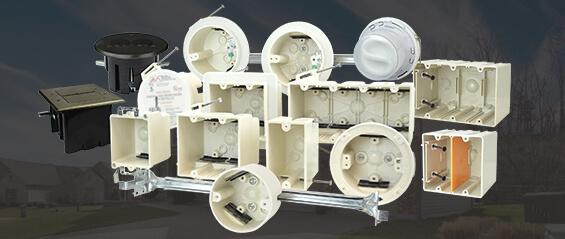When you run things on electricity, you get a lot of extra heat for your troubles. It’s pretty simple. When electricity flows through anything, there is resistance, and that resistance creates heat. If you have enough electricity flowing, the heat can build up excessively, and it creates problems.
In fact, there’s a feedback loop that occurs. As wires get hotter, they create more resistance, and thus more heat.
Needless to say, heat management matters a lot for electricity, and sometimes, that can be tricky. Many electric components need protection from the elements, so we put them in enclosures. But enclosures can trap heat, causing you to trade one problem for another.

It’s all manageable when you learn the essentials of heat dissipation. As it applies to non-metal electrical enclosures, there are really three concepts you need to learn: radiation, surface area, and ventilation.
Radiation
The primary way enclosures dissipate heat is through radiation. In a manner of speaking, they work just like the radiator on a car.
Heat is generated by the flow of electricity inside of the enclosure. Ultimately, that heat is absorbed by the enclosure material and radiated outward (although some heat exchange does occur with the external air).
There’s good news to begin with. Non-metal enclosures have better heat dissipation than unfinished metal enclosures (painted metals have similar dissipation values when compared to non-metal materials). So, by using non-metal materials, you are already off to a good start for heat management.
Surface Area
Since radiation is the primary source of heat dissipation, a higher surface area to volume ratio will dissipate the heat better. If an enclosure is consistently getting too hot, then you want to swap it with a larger enclosure.
Keep in mind that you need to maximize the surface area, not the total volume. If you have too much space inside of the enclosure, the extra air can actually work as an insulator and contribute to excessive heat buildup. It does a poor job of conducting heat from the wires to the enclosure.
If you can expand the enclosure’s surface area without dramatically increasing the volume, then you will improve heat dissipation, and the system will prove more efficient.
Ventilation
You can also add ventilation directly to the enclosure. Ventilation kits allow for passive airflow without creating vulnerabilities where water or other sources of trouble can ingress the enclosure.
With a complex gasket system, the heat from the electric components creates a pressure differential that draws air through the vents. You can literally vent hot air and replace it with fresh air. This is much more efficient than radiation, and it comes with no added risks to your components.
Heat can be a problem for electrical systems, but when it is managed correctly, you can protect the most vulnerable components without creating new challenges for yourself. Focus on non-metal enclosures, getting the size right, and adding ventilation when necessary. If all of that still isn’t enough, you can add active cooling to the system. Aim a fan at the enclosure, and you’ll see temperatures drop rapidly and reliably.
Sources:- : https://safe.nrao.edu/wiki/pub/CICADA/GreenBankSpectrometer/Hoffman_Heat_Dissipation_Document.pdf
Source Url :- https://sites.google.com/view/alliedmoulded44/home




Comments